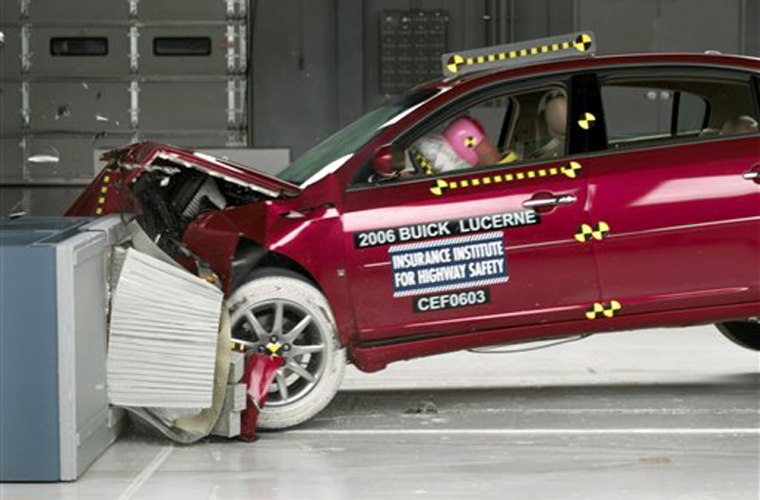The Insurance Institute for Highway Safety said Thursday it has altered a part of its crash test program, allowing manufacturers of top-rated vehicles to provide crash test data that can be verified by the institute before it issues a score.
The change affects its frontal offset crash test, which evaluates a vehicle traveling 40 mph and striking a barrier on the driver’s side.
Along with test results released by the National Highway Traffic Safety Administration, the institute’s information is used by consumers to assess a vehicle’s safety value. The institute’s results have been widely publicized on segments aired on NBC’s “Dateline NBC” since 1995. (MSNBC is a Microsoft - NBC joint venture.)
The institute said the move would free up more time and resources to devote to side-impact crash tests and additional research on crash avoidance technologies.
Adrian Lund, the institute’s president, said the decision reflected the progress made by automakers in providing greater frontal protection. When the institute started conducting frontal tests in 1995, about half of the vehicles it tested were rated either marginal or poor, the lowest of the four marks.
Among its current batch of frontal results, most of the vehicles are rated good, the top score, while only two vehicles are rated marginal and none received a poor mark.
“We’re not getting much in the way of consumer information. When we test a group of vehicles and everything is rated good, it’s good news for the consumers but it doesn’t tell them how to choose the vehicle,” Lund said.
Lund said the institute would not “walk away” from frontal testing. Under the new system, top-performing vehicles would be evaluated for frontal protection by the institute based on an analysis of detailed information of offset tests conducted by automakers, including video.
Only redesigned vehicles which have earned top ratings in their previous versions would be eligible for the new system. Models that are substantially redesigned — with major changes to the vehicle’s size, weight or body style — would still be crash-tested by the institute.
To ensure quality, Lund said the institute would conduct periodic audits of vehicles, comparing the test data from the automakers with an institute crash test.
In its first frontal ratings involving verification of the automakers’ test data, nine 2006 models received a good rating: Buick Lucerne, Cadillac DTS, Hyundai Azera, Toyota RAV4, Honda Pilot, Ford Explorer, Mercury Mountaineer, Mercedes M Class and Dodge Ram 1500. The 2007 models of the Ford Explorer Sport Trac and Toyota Camry were rated good, and the 2006 Chevrolet Impala was rated acceptable.
The Lucerne and DTS were audited. The institute’s test results and General Motors Corp.’s internal tests were nearly identical and received good overall marks under both methods.
